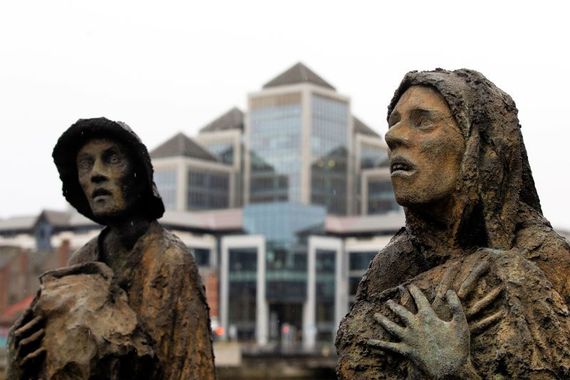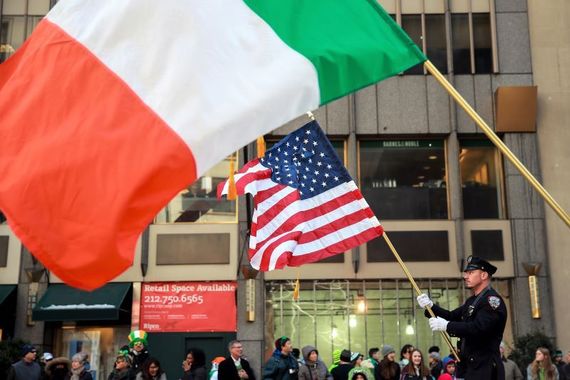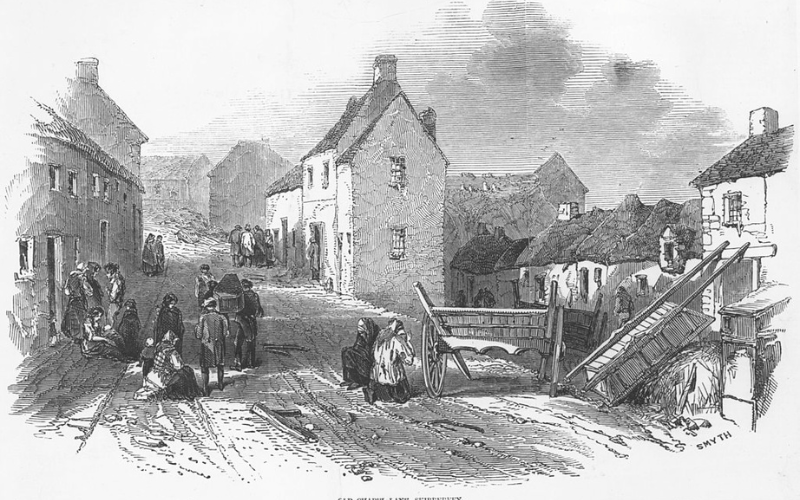How Irish Famine immigrants changed life in New York and created an everlasting home for Irish-Americans.
The Irish in New York
In the decade following the 1845 appearance of the potato blight in Ireland, over 900,000 Irish emigrants entered New York, which was the biggest port in America.
Later on, a census taken in 1855 revealed that the population of Manhattan was over 25% Irish-born. Then by the end of the nineteenth century, New York was the largest urban Irish settlement in the world.
In the decade following the Irish famine, 900,000 Irish emigrants entered New York
How the Irish changed New York
Due to the poor conditions on the boats the Irish traveled into America, many arrived in New York extremely sick. They were sent to the growing public health complex on islands in the East River, on Blackwell’s Island, and a newly-built hospital complex Ward’s Island. The need to accommodate Irish immigrants played a big part in driving the development of New York City’s public health system.
While neighborhoods around New York changed because of the influx of Irish immigrants during the Famine era. The neighborhoods at the southern end of Manhattan had historically been home to professionals, but by the middle decades of the nineteenth century they began to move north and laborers and immigrants moved in.
Farther north in Manhattan, infrastructure projects were being done, and Irish laborers in search of work set up camps and shantytowns around these construction sites. These Irish immigrants built railroads, bridges, streets and aqueducts, ultimately helping to create the New York City we know today.
The Irish also had an influence on religion in New York. At the time New York was mainly a predominantly Protestant city but the influx of Irish Catholic immigrants caused a shift in this. In 1879, the construction of St Patrick's Cathedral in Midtown Manhattan was completed. The cathedral was named after the patron saint of Ireland and was built in response to the increasing number of Irish Catholics in the city. Most funding for the cathedral came from the parishioners who were mainly poor Irish immigrants.
Influence of the Irish in New York today
Strong Irish-American communities in New York are very much present today, such as places like Woodlawn in the Bronx. Informally referred to as "Little Ireland", the streets in the area are lined with Irish stores, cafés, and pubs, as well as immigration centers for the newly arrived and the established Irish immigrants.
Influence of the Irish in New York today
The Irish-American community has also played a big part in the education system in New York with universities being established by Irish immigrants.
Fordham University was founded by Archbishop John Hughes, an Irish immigrant, and built by Irish labor. While St. John's University was founded by Bishop John Laughlin an Irish immigrant aiming to educate Irish and other immigrants in a strong Catholic atmosphere.
Irish Famine Memorial in New York
Today you can pay your respects at the Irish Hunger Memorial at Battery Park City. Built in order to raise awareness to the famine in Ireland between 1845 and 1852 (when more than one-and-a-half million people died), this gorgeous outdoor garden sits on more than a half-acre of land.
Famine statistics, quotes and poems are displayed on an extensive surrounding wall, and inside the garden, there are more than 60 types of flora from Ireland, a recreated 19th-century Irish cottage and rocks from all of the country’s 32 counties.
H/T: Great Famine Voices , RTÉ Great Irish Famine Project
* Originally published in 2021. Updated in September 2025.




Comments